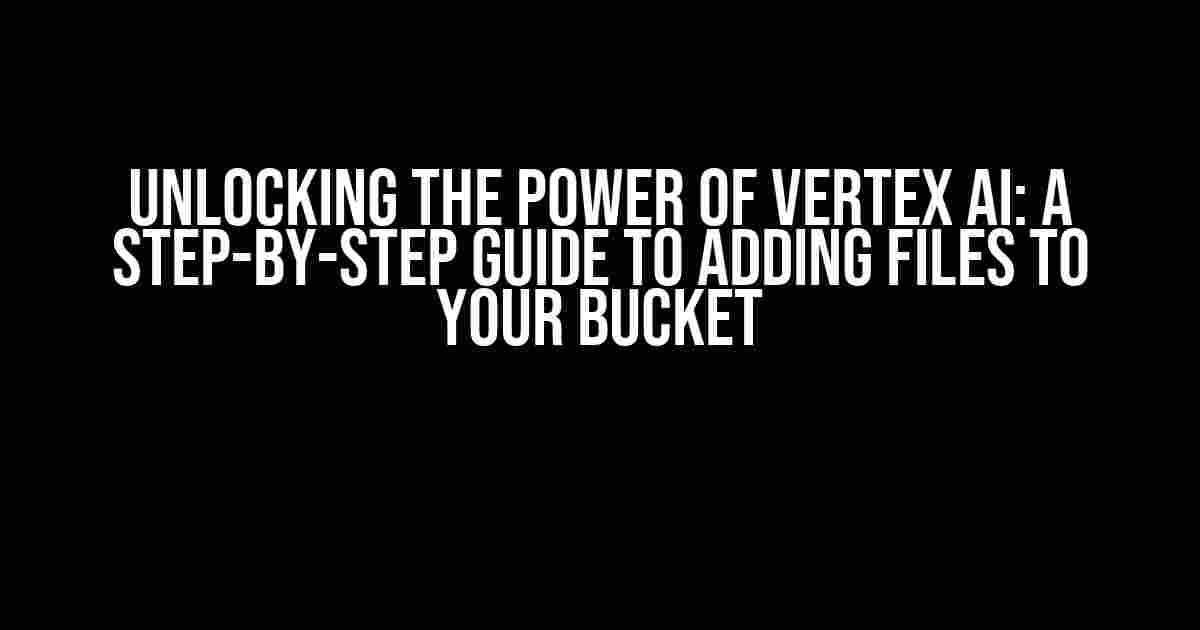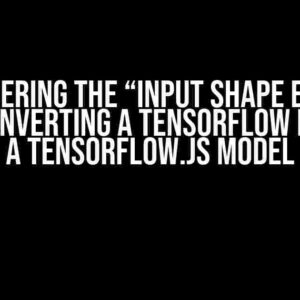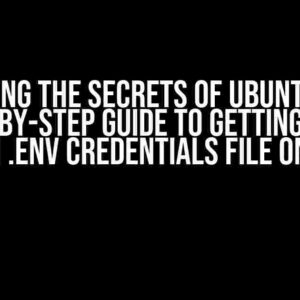Are you ready to take your machine learning models to the next level with Vertex AI? One of the most crucial steps in getting started with this powerful platform is learning how to add files to your Vertex AI bucket. In this comprehensive guide, we’ll walk you through the process with clear, direct instructions and explanations that will have you uploading files like a pro in no time!
What is a Vertex AI Bucket?
A Vertex AI bucket is a cloud-based storage repository that allows you to store and manage your data, models, and other files used in your machine learning projects. Think of it as a digital filing cabinet where you can safely store and access your files from anywhere. With a Vertex AI bucket, you can focus on building and training your models without worrying about data management.
Benefits of Using a Vertex AI Bucket
- Scalable and durable storage for large datasets
- Easy data management and organization
- Secure access controls to protect your data
- Seamless integration with Vertex AI services
- Cost-effective storage solutions
Preparing Your Files for Upload
Before we dive into the upload process, make sure your files are prepared and ready to go! Here are some essential tips to keep in mind:
- File Format: Vertex AI supports various file formats, including CSV, JSON, and AVRO. Ensure your files are in a compatible format to avoid any issues during upload.
- File Size: Vertex AI has file size limits, so be sure to check the maximum allowed size for your bucket. You can always split larger files into smaller chunks for easier upload.
- File Naming: Use clear and descriptive names for your files to avoid confusion and make it easier to identify them in your bucket.
Adding Files to Your Vertex AI Bucket
Now that your files are ready, let’s get started with the upload process! You can add files to your Vertex AI bucket using the Google Cloud Console, theVertex AI SDK, or the gsutil command-line tool. We’ll cover each method in detail below.
Method 1: Using the Google Cloud Console
The Google Cloud Console provides a user-friendly interface to upload files to your Vertex AI bucket. Follow these steps:
- Log in to the Google Cloud Console and navigate to the Vertex AI dashboard.
- Click on the “Buckets” tab and select the bucket you want to upload files to.
- Click the “Upload” button and select the file you want to upload.
- Choose the correct file format and specify any additional settings as needed.
- Click “Upload” to initiate the upload process.
gsutil cp local-file.txt gs://my-bucket/
Method 2: Using the Vertex AI SDK
The Vertex AI SDK provides a programmatic way to add files to your bucket. Here’s an example using Python:
from google.cloud import storage
from google.cloud import aiplatform
# Create a client instance
storage_client = storage.Client()
aiplatform_client = aiplatform.gapic.VertexAiClient()
# Specify your bucket and file
bucket_name = "my-bucket"
file_name = "local-file.txt"
# Upload the file
bucket = storage_client.get_bucket(bucket_name)
blob = bucket.blob(file_name)
blob.upload_from_filename(file_name)
# Verify the upload
print("File uploaded successfully!")
Method 3: Using the gsutil Command-Line Tool
The gsutil command-line tool provides a fast and efficient way to upload files to your Vertex AI bucket. Here’s an example:
gsutil cp local-file.txt gs://my-bucket/
| Method | Advantages | Disadvantages |
|---|---|---|
| Google Cloud Console | User-friendly interface, easy to use | Limited to small file sizes, slower upload speeds |
| Vertex AI SDK | Programmatic access, scalable, and flexible | Requires coding expertise, can be complex for large-scale uploads |
| gsutil Command-Line Tool | Fast and efficient, scalable, and flexible | Requires command-line expertise, can be overwhelming for beginners |
Troubleshooting Common Issues
Encountering issues during the upload process? Don’t worry, we’ve got you covered! Here are some common issues and their solutions:
- File Format Errors: Ensure your files are in a compatible format and adjust the upload settings accordingly.
- File Size Limitations: Split larger files into smaller chunks or use the gsutil command-line tool for faster upload speeds.
- Authentication Errors: Verify your credentials and ensure you have the necessary permissions to access your Vertex AI bucket.
Conclusion
And that’s it! You’ve successfully added files to your Vertex AI bucket using one of the three methods. Remember to choose the method that best fits your needs and upload requirements. With Vertex AI, you can focus on building and training your machine learning models while enjoying scalable and durable storage for your data.
Now that you’ve mastered adding files to your Vertex AI bucket, it’s time to take your machine learning models to the next level! Stay tuned for more tutorials and guides on getting the most out of Vertex AI.
Happy uploading!
Frequently Asked Questions
Need help adding files to your Vertex-AI bucket? We’ve got you covered!
Q: What file formats are supported by Vertex-AI buckets?
A: Vertex-AI buckets support a wide range of file formats, including CSV, JSON, Avro, and more! You can upload files up to 5TB in size, so go ahead and upload those large datasets.
Q: How do I upload files to my Vertex-AI bucket?
A: Easy peasy! You can upload files to your Vertex-AI bucket using the Google Cloud Console, the `gsutil` command-line tool, or the Vertex-AI API. Simply select the file you want to upload, choose your bucket, and hit upload!
Q: Can I upload files to my Vertex-AI bucket from outside of Google Cloud?
A: Absolutely! You can upload files to your Vertex-AI bucket from anywhere, as long as you have an internet connection. Just make sure you have the necessary permissions and credentials to access your bucket.
Q: How do I organize my files in my Vertex-AI bucket?
A: You can organize your files in your Vertex-AI bucket using folders and subfolders, just like you would on your local machine. You can also use prefix and delimiter to simulate a hierarchical structure.
Q: Are my files in Vertex-AI buckets encrypted?
A: Yes, all files uploaded to Vertex-AI buckets are encrypted by default. Google Cloud uses server-side encryption to protect your data at rest, so you can rest assured that your files are secure.



